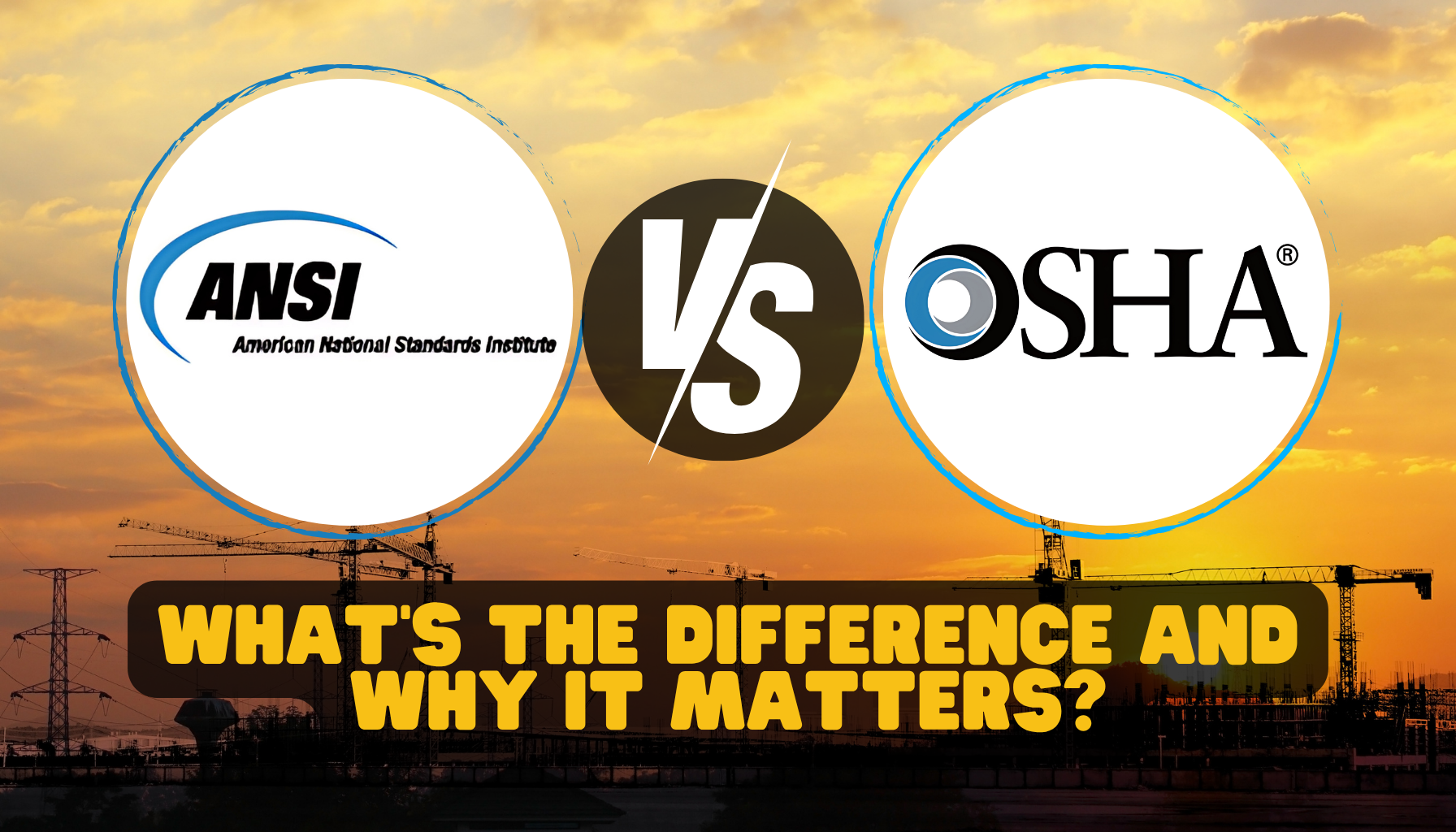If you’ve ever looked at safety gear or training standards, chances are you’ve seen references to both ANSI and OSHA. Sometimes they appear side by side, and other times it’s unclear which one takes precedence.
So what’s the deal? Are ANSI and OSHA the same thing? And when it comes to keeping your jobsite compliant and your crew safe, who should you follow?
Let’s clear it up.
First, Who Are They?
OSHA stands for the Occupational Safety and Health Administration. It’s a government agency under the U.S. Department of Labor, and its job is to enforce workplace safety laws. OSHA creates legally binding regulations that employers must follow. If you violate them, you can face serious penalties.
ANSI, on the other hand, is the American National Standards Institute. It’s a private, nonprofit organization that develops voluntary consensus standards. ANSI doesn’t enforce laws, but its standards are widely recognized for promoting best practices in everything from PPE to fall protection.
OSHA = Law, ANSI = Best Practice
Here’s the simplest way to think about it:
-
OSHA sets the minimum legal requirements.
-
ANSI often goes further by setting industry best practices.
If OSHA is the safety floor, ANSI is the ceiling you aim for.
Let’s look at a quick example. OSHA might require that eye protection is used in certain environments. ANSI will define the performance standards for that eyewear including impact resistance, UV protection, and more.
In fact, OSHA often references ANSI standards in its regulations. When it does, those ANSI standards become enforceable under OSHA.
Why It Matters to You
Whether you’re an employer, site supervisor, or safety manager, you need to know where your responsibilities lie:
-
If OSHA requires it, you’re legally obligated to comply.
-
If ANSI recommends it, it may not be law but it’s often what inspectors, clients, and safety auditors expect.
And in the event of an incident, following ANSI standards can help demonstrate that you took all reasonable safety precautions beyond the minimum OSHA rules.
Where You’ll See Both ANSI and OSHA
Some areas where both standards show up side by side:
-
High-visibility clothing (ANSI/ISEA 107 and OSHA 1926.651)
-
Hard hats (ANSI Z89.1 referenced by OSHA)
-
Fall protection equipment (OSHA 1926 Subpart M and ANSI Z359 series)
-
Cut-resistant gloves (ANSI/ISEA 105 cut levels are not enforced by OSHA but are widely accepted)
-
Confined space entry procedures
-
First aid kit contents
Knowing both sets of standards helps you choose better gear, write stronger safety policies, and prepare for audits or site visits.
Do I Have to Follow ANSI?
In most cases, you’re not legally required to follow ANSI standards unless OSHA adopts or references them. But here’s the thing. Courts and OSHA investigators often look to ANSI when evaluating whether an employer provided a safe work environment.
So while it may not be required, it’s smart risk management to stay aligned with ANSI recommendations especially when they’re easy to implement.
Bottom Line
ANSI helps you work smarter. OSHA makes sure you work safer.
One sets the rules. The other raises the bar.
Understanding the difference and how they work together can help you avoid fines, choose better safety gear, and protect your team with confidence.
Need help selecting OSHA-compliant or ANSI-rated safety gear?
Call us at 303-537-5832 or visit ColoradoSafetySupply.com to get expert help.















